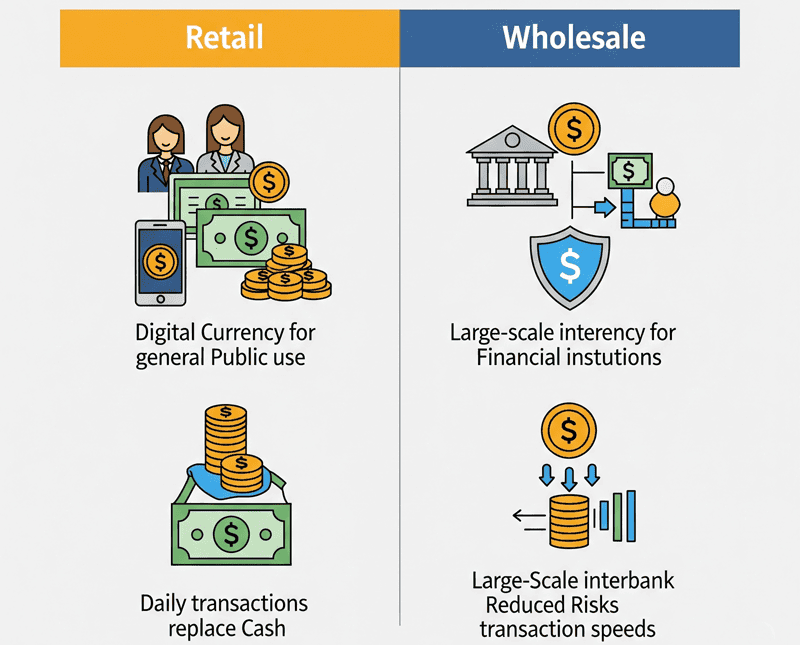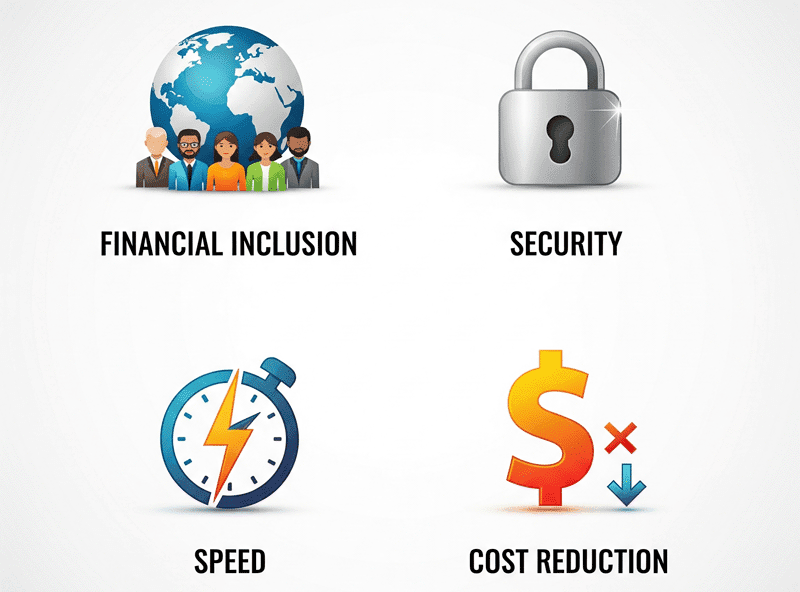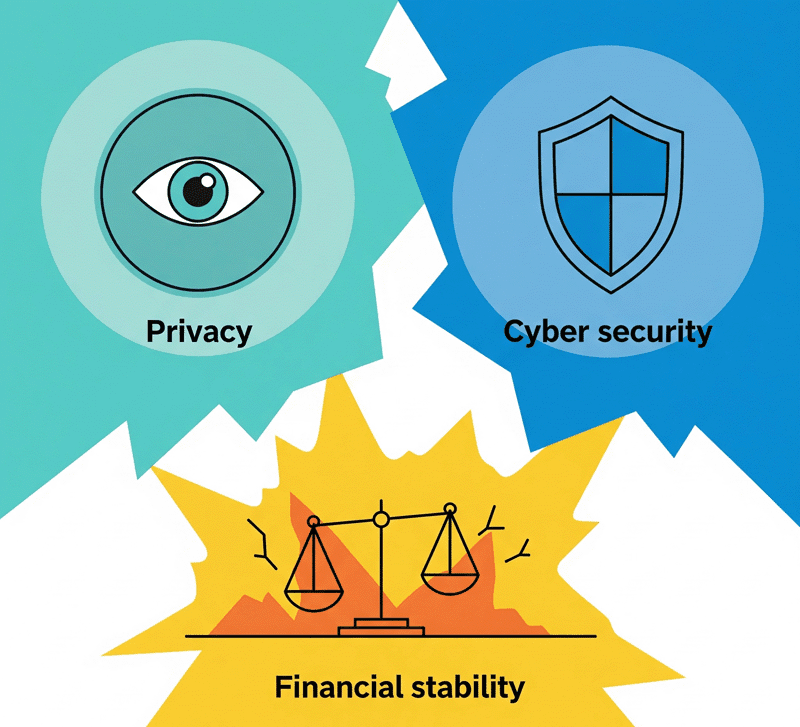Central Bank Digital Currencies (CBDCs) are rapidly gaining attention worldwide as governments explore new ways to modernize financial systems and enhance economic resilience. In simple terms, a CBDC is a digital form of a country’s official currency, issued and regulated by its central bank. Unlike decentralized cryptocurrencies like Bitcoin, Ethereum or Avalanche CBDCs represent legal tender backed by the state, aiming to combine the benefits of digital money with the security and trust of traditional fiat currency.
This article will explore what CBDCs are, how they work, their potential benefits and challenges, and what global efforts are underway to implement them — helping readers understand why CBDCs are becoming a hot topic in financial and technological circles.
What is a CBDC?
A Central Bank Digital Currencies is essentially the digital version of a nation’s fiat currency. It exists in electronic form and is designed to be used for everyday transactions just like physical cash. However, instead of being stored as physical bills or coins, CBDCs exist on secure digital ledgers, often utilizing blockchain or other distributed ledger technologies (DLT).

Unlike cryptocurrencies, which are typically decentralized and operate outside government control, CBDCs are centralized and fully controlled by the issuing central bank. This control ensures that Central Bank Digital Currencies maintain the same trust and legal status as paper money but with the added convenience, transparency, and speed of digital payments. Similar to stablecoins, CBDCs aim for price stability, but they differ in governance and trust models. In contrast, Decentralized Finance (DeFi) offers a completely decentralized alternative, removing intermediaries and enabling peer-to-peer transactions.
Types of Central Bank Digital Currencies
There are two main types of CBDCs:
- Retail: These are designed for use by the general public, allowing individuals and businesses to hold digital currency for daily transactions. Retail CBDCs could potentially replace cash, offering a safer and more efficient payment method.
- Wholesale: Intended for use by financial institutions, wholesale CBDCs facilitate large-scale transactions such as interbank settlements, reducing risks and improving transaction speeds within the financial sector.

How Do CBDCs Work?
CBDCs leverage advanced technologies to facilitate secure, fast, and cost-effective digital transactions. Depending on the model chosen by the central bank, CBDCs may operate on centralized databases or decentralized blockchain networks.
Central banks oversee the issuance and management of CBDCs, controlling the money supply and ensuring compliance with financial regulations. Users access CBDCs through digital wallets, which can be hosted on smartphones, computers, or even specialized hardware devices. Transactions can be made peer-to-peer without intermediaries, significantly reducing transaction costs and processing times.
Additionally, CBDCs can be designed to work offline or with limited connectivity, broadening financial access in regions with poor internet infrastructure.
Benefits of CBDCs
Central Bank Digital Currencies promise several advantages over traditional payment methods and existing digital currencies:

- Financial Inclusion: CBDCs can provide unbanked or underbanked populations with access to secure digital payments without needing a traditional bank account. This could empower millions globally.
- Reduced Transaction Costs: By eliminating intermediaries like payment processors, CBDCs make payments cheaper and faster for consumers and businesses.
- Enhanced Security: Digital currencies reduce risks associated with physical cash, such as theft or loss, and can incorporate strong cryptographic protections.
- Monetary Policy Efficiency: Central banks can implement monetary policies more directly and transparently, using CBDCs to influence economic behavior.
- Transparency and Traceability: Digital transactions can be monitored to reduce fraud, money laundering, and illicit activities while maintaining user privacy with proper safeguards.
- Innovation Enablement: CBDCs may enable new financial services, programmable money, and automated compliance, fostering innovation across industries.
Challenges and Concerns
Despite their potential, Central Bank Digital Currencies raise several challenges and concerns that need careful consideration:

- Privacy Issues: CBDCs might allow governments to track every transaction, raising serious privacy concerns for users. Balancing transparency and privacy is a key challenge.
- Cybersecurity Risks: CBDCs require robust security to prevent hacking, fraud, and system failures. A breach could have severe economic consequences.
- Financial Stability: Rapid adoption of CBDCs could disrupt traditional banking models, potentially leading to reduced deposits in commercial banks and affecting lending.
- Implementation Complexity: Building the infrastructure, legal frameworks, and regulatory mechanisms for CBDCs is a complex, time-consuming process that involves multiple stakeholders.
- Public Trust and Acceptance: For CBDCs to succeed, public confidence in the new system is crucial, requiring clear communication and education.
Global CBDC Initiatives
Many countries are actively researching and piloting Central Bank Digital Currencies projects, each with unique approaches reflecting their economic and political contexts:

- China’s Digital Yuan: One of the most advanced CBDC projects, China’s digital yuan aims to increase payment efficiency, reduce fraud, and enhance government oversight. It’s already in pilot stages across multiple cities.
- European Central Bank (ECB): The ECB is exploring the digital euro to complement cash and ensure the eurozone keeps pace with digital financial innovation.
- United States: The Federal Reserve is conducting research and consultations on CBDC benefits and risks but has yet to commit to a full launch.
- Other Nations: Sweden’s e-krona, the Bahamas’ Sand Dollar, and projects in Canada, South Korea, and several African countries showcase global momentum toward CBDCs.
Future Outlook
Central Bank Digital Currencies are expected to fundamentally reshape the future of money and payments. They have the potential to transform banking, commerce, government services, and even international trade. As digital currencies become mainstream, they may enable faster cross-border payments, increase financial inclusion, and spur new economic models.
However, the widespread adoption of Central Bank Digital Currencies depends on overcoming technical, legal, and societal challenges, including interoperability with existing financial systems and ensuring equitable access for all users.
Conclusion
Central Bank Digital Currencies represent a major innovation in the world of finance. Offering the speed and convenience of digital payments combined with the trust and stability of traditional money, CBDCs could revolutionize how we transact globally. While challenges remain, ongoing global developments and pilot programs indicate that Central Bank Digital Currencies will play a pivotal role in the future financial landscape. For users, understanding digital wallet security is essential to safely manage and protect these new forms of currency.
Today is crucial for anyone interested in the evolving digital economy and the future of money.
For more detailed and up-to-date information on CBDCs, visit the International Monetary Fund (IMF) page on digital currencies:
https://www.imf.org/en/Topics/fintech/central-bank-digital-currency













